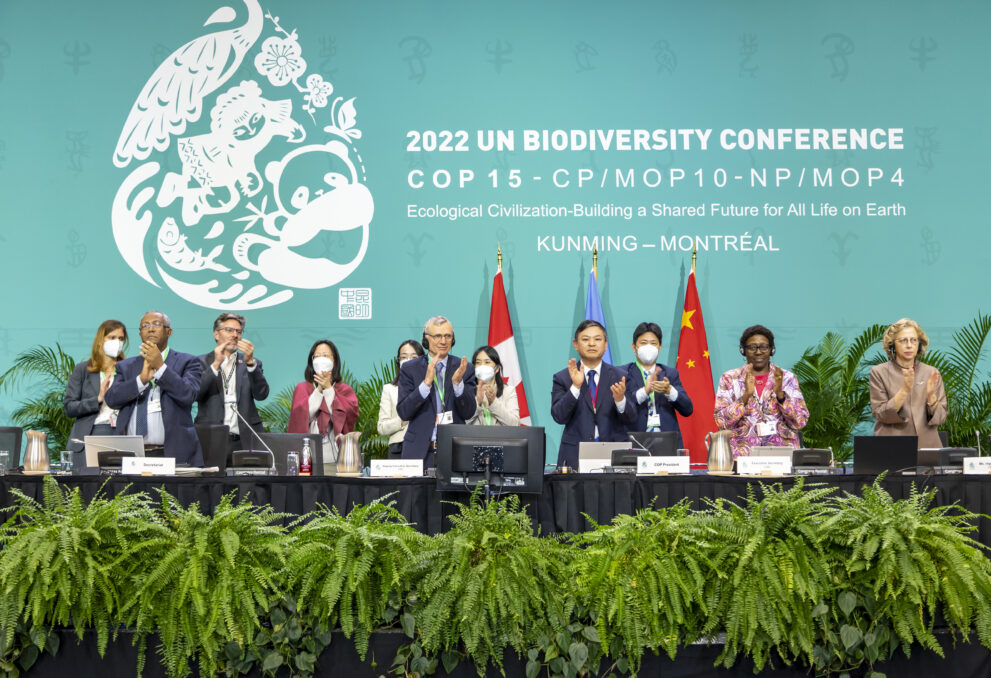Gatineau – Everyone has an important role to play in the conservation of nature: conserving and restoring habitat and protecting and recovering species at risk. That’s why the Government of Canada is finding new ways to collaboratively engage partners across all sectors to help support nature.
Today, as we celebrate Canadian Environment Week, Steven Guilbeault, Minister of Environment and Climate Change, announced that the Conservation Exchange Pilot is extended until March 31, 2026. The Conservation Exchange is applying and testing a science-based, standardized measure to determine the biodiversity benefits of conservation projects.
The Conservation Exchange process begins with a business voluntarily funding a conservation organization to undertake a project to support nature. The business will receive a certificate from the Government of Canada to recognize its investments in, and contribution to, biodiversity conservation in Canada. The certificate states the biodiversity benefits realized by the project, following a science and knowledge-based assessment led by Environment and Climate Change Canada. Conservation Exchange certificates can be used to demonstrate a positive environmental impact to the business’s customers, stakeholders, and investors.
Three new projects have recently been added to the Conservation Exchange Pilot, including the following:
- Upper St. Mary Collaborative Stewardship Program—to improve stream and riparian health in several high-priority creek systems in the southern Alberta foothills. The program involves stream rehabilitation to improve water quality and restore spawning and rearing habitat for threatened fishes, including Bull Trout and Rocky Mountain Sculpin. In collaboration with Indigenous groups and industry, this project is being carried out by Trout Unlimited Canada, with funding from TC Energy. This is part of TC Energy’s long-standing relationship with Trout Unlimited Canada.
- Old Man on His Back Grassland Restoration for improved pollinator habitat and species at risk—to enhance native grassland habitat to improve pollinator habitat for birds and insects, benefiting several species at risk as part of a long-term restoration project. In addition, this project will use beneficial range management action to support bison grazing and invasive species management to reduce the spread of weeds and sustain rangeland services such as habitat for wildlife. This project is being carried out by Nature Conservancy of Canada and is fully funded by Aviva plc (Aviva), in Saskatchewan.
- Dune Restoration in the Dundurn Sandhills for species at risk—to conduct prescribed burns to restore native habitat for sand dune species. Sand dunes are a rare landform that provides valuable habitat to many species at risk, some of which are exclusively found in sand dune habitat. This project is also being carried out by Nature Conservancy of Canada, with funding from Aviva, in Saskatchewan.
Businesses across Canada are reflecting on ways to improve environmental sustainability practices, and the Conservation Exchange Pilot presents a voluntary opportunity for business to invest in conserving nature. This directly supports Target 19 of the Kunming–Montréal Global Biodiversity Framework, which aims to increase the level of financial resources from all sources, to support biodiversity conservation. By working together, with a whole of society approach, Canada continues to make progress toward domestic and international conservation goals and targets.
This announcement reminds us that we must work collectively to create and maintain a healthy environment that can be enjoyed by all for generations to come. To learn more about other Government of Canada initiatives, and to join in Canadian Environment Week celebrations with helpful resources and activities, visit Canadian Environment Week 2024.
“Nature has endless benefits for all of us—and in return, we all have a role to play in protecting Canada’s biodiversity. We know that businesses are looking for meaningful ways to give back to the environment, and the Government of Canada is finding ways to share the responsibility of funding all the projects required to meet our domestic and international conservation goals. This pilot brings partners together to fund and implement effective conservation projects that address the fundamental issue of biodiversity loss. Together, we can make an impact.” – Steven Guilbeault, Minister of Environment and Climate Change








